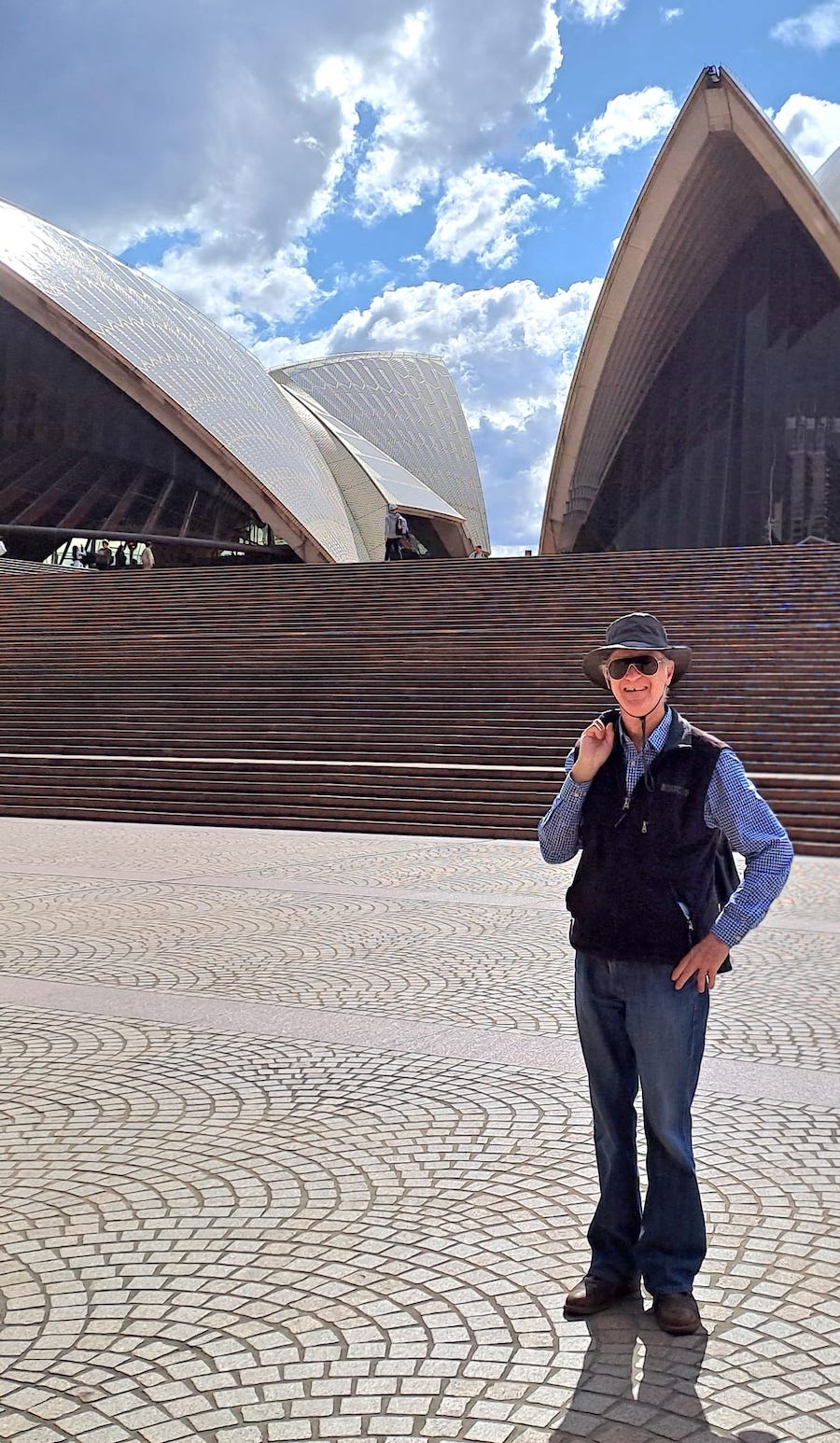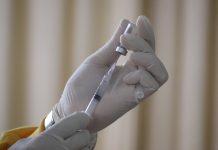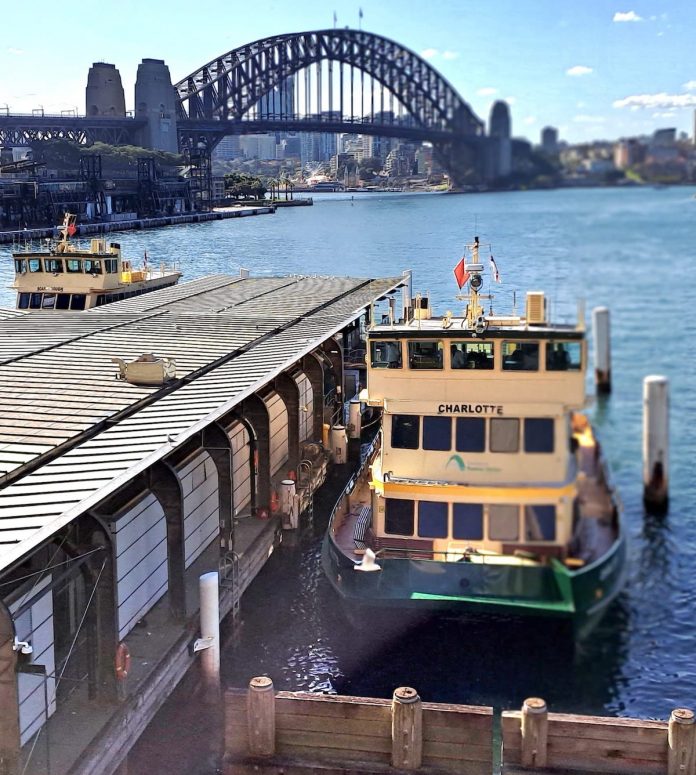Sydney Harbour is glistening under a blue sky. Our Manly ferry suddenly stops, mid-stream. The skipper quells the engine and makes an announcement.
“If passengers would like to look out the left side of the ferry you will see a sunbaking seal.”
Next to the ferry, a shiny black flipper and part of a tail are raised. Laying on its back, the seal’s head pops up for a breath, then lolls back for his spell in the sun.
Sydney Harbour is buzzing with ferries, yachts, pleasure craft and, moored near that famous bridge, a P&O cruise ship. A seal has much to navigate. Rest-time in the sun, however, has proved too tempting for the unwitting animal.
Sydney Harbour continues to surprise no matter how many visits the tourist makes. The city is among those metropolises that should be visited at least a few times in our lives.


A few days in Sydney can be relished just in-and-around the natural harbour and that’s what we do after the long flight from Perth.
Departing the ferry at Circular Quay, a cheery, uniformed gent farewells us with handshakes. A television crew materialises and that night we see ourselves on TV news, shaking hands with the gent who, we learn, was leaving after 50 years ferry service.
On dry land and with time to spare, I head off on foot around the harbour, past the Opera House, beside Royal Botanic Gardens and Domain to Darlinghurst. Joggers, dog walkers, artists and photographers mix with wandering tourists.
The walk is long, more than an hour, passing moored navy ships, garden beds and plants and sculptures including two naked ladies with apparently little historic connection.
Darlinghurst is an arts precinct with 21 galleries. It was formerly home to many art students before property prices and rents climbed well out of their reach. It was once “a grungy overflow from the Kings Cross red-light district”, says a tourist blurb.
Lyons Gallery, we noted, spruiked works including “iconic portraits of David Bowie and Madonna meet wildlife photography and pop art.”
The NSW Art Gallery isn’t far away atop the botanic gardens and was buzzing with its latest bequest of 2,000 artworks by troubled genius, the late Brett Whiteley. Worth $100 million, it was a donation by Wendy Whiteley dedicated to their artist daughter, Arkie, who died in 2001, aged 37.
We arrive at the gallery to catch the Archibalds, always controversial since 1921 with its portraits and $100,000 top prize money. A gallery visit and a coffee break is always worth the time, along with a stroll through the Botanic Gardens.
Close to the harbour is the Sydney Museum where we are drawn to images of cars cramming Bondi Beach, pre-trains, in 1929 and a 1932 poster of a lifesaver to promote the opening of the bridge.
The documents show the First Fleet left Britain in 1787 and took eight long months to reach Sydney. It comprised two navy ships, three storeships and six convict transports with 775 prisoners including the youngest, John Hudson, just 13.
The Indigenous story of the Gadigal country of the Eora Nation is outlined and displayed with the explanation that “after 200 years we are still resolving land issues and how to live together.”


In Sydney, progress marches on with $100 million spent on an overhaul of city bus shelters, kiosks and signage (run by renewable energy) throughout the city’s 26km2.
Elsewhere, authorities were looking for a venue for a 1891 Victorian Italianate villa (including its front fence) lying in pieces in storage in South-West Sydney, dismantled and moved to make way for a $915 million Parramatta Powerhouse. Sydney operates on an awesome scale.
The northern beaches tempt the traveller to take a bus from Manly Wharf although some of the buses, every 10 minutes, are bone-rattling for the hour’s trip.
Palm Beach is at the end of the peninsula between the Pacific Ocean and the expansive, picturesque Pittwater. High up on a hill, between houses, we look down on beautiful suburb and its landmark lighthouse.
Palm Beach, with thumping surf, popular scones and cream and terrific views is a base for squillionaires including the Packer family, and is a regular getaway for visiting movie and sports stars.
The scene is familiar to people all over the world who watch blockbuster TV series, Home & Away. We are standing in a little-known “Bible Garden”, tended by volunteers with plants that are named in the Bible. Each plant has a name-tag plus a pointer to where it appears in the holy book.
The coast served its First Nations peoples well with fish, lobsters, muscles and oysters that Captain James Cook said were the biggest he’d ever seen “after all my travels.”
We take a diversion to suburban St Ives, attracted by an annual orchid show. Large sheds of showpiece orchids lure hundreds of visitors and buyers. Long queues form in the light rain.
Gardeners complain about bush turkeys that continue to invade the northern suburbs, digging and pecking at everything in their scrutinising sight.
Birdsong is strong throughout the suburbs blessed by expansive stretches of trees and plants, flourishing in almost sub-tropical conditions.
Sydney’s stark differences with Perth, the scale of the city, its history, waterways and relentless pace make Sydney a paradise for the tourist. And it’s never the same.



































